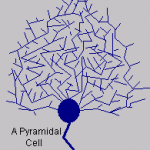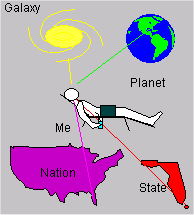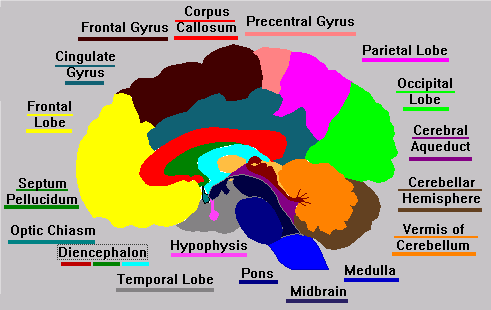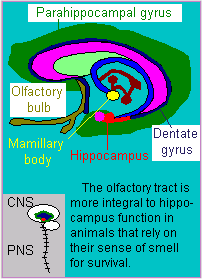06 Aug Finding yourself in the Hippocampus
On October 6, 2014, the Nobel Assembly at Karolinska Institutet awarded The 2014 Nobel Prize in Physiology or medicine to John O´Keefe and to May‐Britt Moser and Edvard I. Moser for their discoveries of cells that constitute a positioning system in the brain. John O´Keefe is Director of the Sainsbury Wellcome Centre in Neural Circuits and Behaviour at University College London. May‐Britt Moser the Director of the Centre for Neural Computation at Norwegian University of Science and Technology in Trondheim.
These researchers, and others, have identified specialized “place” cells in the brain that activate at a certain known place, and “grid” cells in the hippocampus, that form a GPS-like coordinate system that allows for keeping track of where we are and where we are going in the spatial environment. This ability is a core component of understanding context that manages position, motion and distance knowledge.
“Recent investigations with brain imaging techniques, as well as studies of patients undergoing neurosurgery, have provided evidence that place and grid cells exist also in humans. In patients with Alzheimer´s disease, the hippocampus and entorhinal cortex are frequently affected at an early stage, and these individuals often lose their way and cannot recognize the environment. Knowledge about the brain´s positioning system may, therefore, help us understand the mechanism underpinning the devastating spatial memory loss that affects people with this disease” (The Nobel Assembly, 2014)
| Understanding Context Cross-Reference |
|---|
| Click on these Links to other posts and glossary/bibliography references |
|
|
|
| Prior Post | Next Post |
| Exformation vs. Subtext | Emotional Intelligence |
| Definitions | References |
| limbic system | The Nobel Assembly 2014 Anderson 1983 |
| temporal lobe cerebrum | Pansky 1988 Kuffler 1984 |
| hippocampus | Panksepp 1998 |
The Hippocampus
The hippocampus is located within the folds of the temporal lobe (gray lower area in the illustration below). Though it is not a very large part of the brain, its roles are critical to the overall functioning of several aspects of the brain (Panksepp 1998). It is a crucial component of maintaining context to support the cognitive function of interpreting sensory input. It is part of the limbic system that forms a border around the medial wall of the cerebrum. The hippocampal formation is made up of the hippocampus (sometimes called Ammon’s Horn), the dentate gyrus, and part of the parahippocampal gyrus.
Morphologically, the hippocampus is divided into three major cellular layers: the plexiform, the pyramidal, and the polymorphic layers. As with the cerebellum and cerebrum, the cells in the different layers differ in form – and probably in function. Also, as with the cerebrum and cerebellum, the communication pathways between the hippocampus and the layers of the brain areas involved in both interpretation of incoming stimuli (sensory perception) and higher order “reasoning” centers are ubiquitous. These input and feedback loops demonstrate the importance of the hippocampus in a variety of cognitive functions. The hippocampus is adjacent to several areas of the brain. Its cells’ fibers extend into the cerebrum (many into the cingulate gyrus) and midbrain.
The olfactory tract is more integral to hippocampus function in animals that rely on their sense of smell for survival, suggesting that evolution played a significant role in differentiating the hippocampus and locating it where it is in the map of the brain..
Hippocampus I/O
Afferent fibers enter the hippocampus through the rhinal fissure from the entorhinal cortex (area #28 in Brodman’s map). Four of the senses (excluding olfactory) supply afferent impulses, many through synaptic relays from the  temporal cortex (auditory), visual cortex, and somatosensory cortex. Axons make up the pathways from area 28. These axons form synapses with dendrites of pyramidal cells in the hippocampus, but not with the granule cells in the dentate gyrus that the pathways traverse. The hippocampus also receives input from diencephalar nuclei such as the anterior thalamic nucleus.
temporal cortex (auditory), visual cortex, and somatosensory cortex. Axons make up the pathways from area 28. These axons form synapses with dendrites of pyramidal cells in the hippocampus, but not with the granule cells in the dentate gyrus that the pathways traverse. The hippocampus also receives input from diencephalar nuclei such as the anterior thalamic nucleus.
Efferent fibers, in addition to extending into the cingulate gyrus, traverse the fornix to the mamillary bodies. Axons from the hippocampus extend into frontal areas of the cortex that have already been identified with advanced cognitive functions.
Both morphological and functional evidence directly links the hippocampal formation to endocrine functions, including:
- the mediation of some hormone secretion,
- learning and recent memory activities,
- emotional expression and aggressive behavior, and
- hypothalamic and autonomic functions.
Cognitive Map
Evidence suggests that the hippocampus provides a cognitive map of the perceptual environment. For animals, whose olfactory sense is critical to survival, the hippocampus appears to play a role in mapping the immediate spatial environment (where one is at a given time) (O’Keefe, 1989, p. 225).
This type of cognitive map may be primarily visual. On the other hand, the dominant senses in animal behavior are those used for survival: sight, sound, and smell. Coordination of a spatial template of the food-gathering environment and an olfactory path to the location of the food would provide animals with a good survival mechanism.
To interpret complex inputs from multiple senses, we need some kind of context to act as a framework for understanding. This notion treats the perceiver as the central point in the context of what is being perceived. In some ways, this is analogous to treating the brain as a central component of a larger process in which the flow of chemicals and fluids and electricity are not segregated in a closed system but are part of a much larger network of cooperating subsystems.

I am the center of my universe. Context revolves around me. All my senses confirm this to me continually. Sitting in my cube, as I am at this moment, I sometimes let my mind wander.
Galaxy Planet
Me
Nation State
Where am I? Why am I here? Why isn’t the tide washing the sand off my feet? As I bounce back and forth in this blog from lofty ideas like subtext and democracy, to more mundane things like the shapes and functions of cells in different parts of the brain, I have to keep reminding myself that the whole point of this is to create systems for computers that will make your life simpler and more enjoyable. Once we achieve that, you can concentrate more energy on improving your universe – your personal context.
| Click below to look in each Understanding Context section |
|---|











